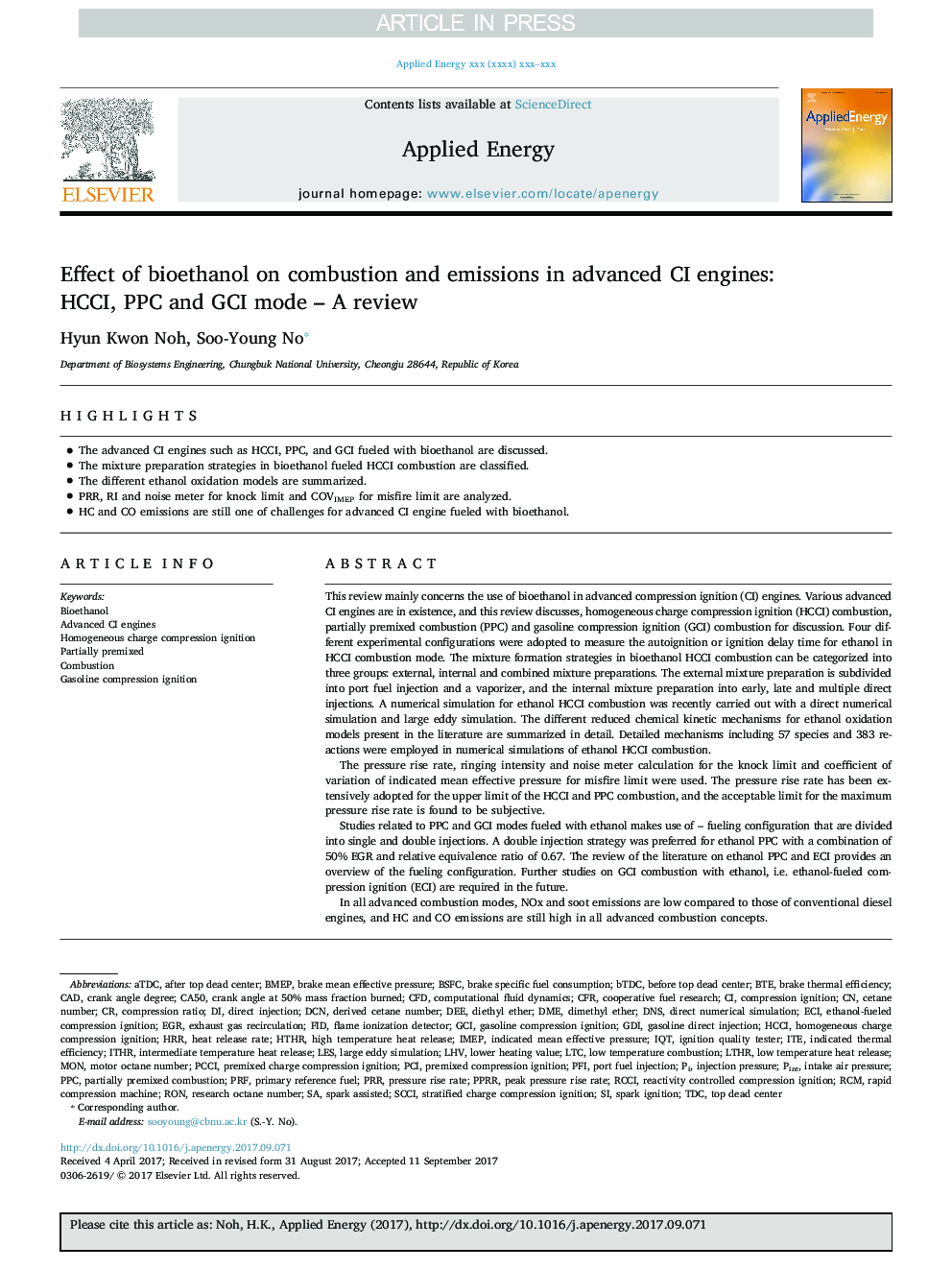| Article ID | Journal | Published Year | Pages | File Type |
|---|---|---|---|---|
| 6681754 | Applied Energy | 2017 | 21 Pages |
Abstract
In all advanced combustion modes, NOx and soot emissions are low compared to those of conventional diesel engines, and HC and CO emissions are still high in all advanced combustion concepts.
Keywords
HCCIHRRBSFCCA50PCCIPRFRCMIQTTDCLHVDCNBMEPPFIGCICFRRCCILTHRLTCDMEPPRRDNSHTHRIMEPPPCEGRDEEPRRaTDCITELESPCIGDIbTDCReactivity controlled compression ignitionflame ionization detectorCombustionPartially premixed combustionLow temperature combustioncompression ignitionlower heating valuepeak pressure rise rateLow temperature heat releaseResearch Octane NumberIndicated thermal efficiencyafter top dead centerBioethanolcooperative fuel researchbrake mean effective pressurebrake specific fuel consumptionport fuel injectiondirect injectiongasoline direct injectionIgnition quality testerDerived cetane numberCetane numberspark ignitiongasoline compression ignitionpremixed charge compression ignitionFIDcrank angle degreeRapid compression machineDiethyl etherCFDComputational fluid dynamicsDimethyl etherBrake thermal efficiencyRONcrank angle at 50% mass fraction burnedPrimary Reference FuelHomogeneous Charge Compression IgnitionLarge Eddy SimulationDirect Numerical Simulationmotor octane numberCADInjection pressurebefore top dead centertop dead centerMONPressure rise rateHeat release rateCompression ratioIndicated mean effective pressurePartially premixedBTEECiPintexhaust gas recirculationHigh temperature heat release
Related Topics
Physical Sciences and Engineering
Energy
Energy Engineering and Power Technology
Authors
Hyun Kwon Noh, Soo-Young No,
